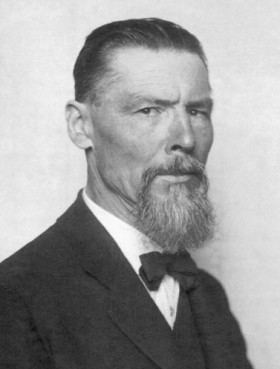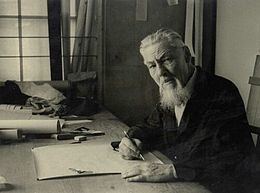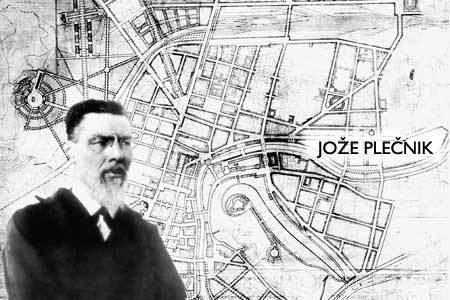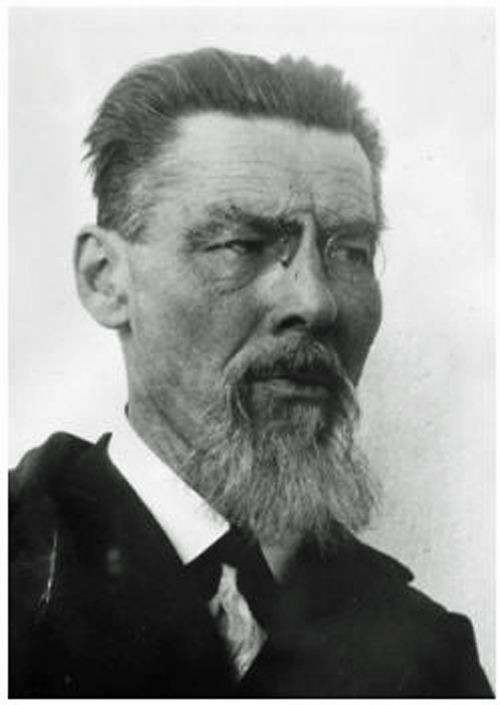Occupation Architect Name Joze Plecnik | Role Architect Awards Preseren Award | |
 | ||
Buildings Projects unrealized Slovene Acropolis (Cathedral of Freedom) (1947) Books Joze Plecnik, 1872-1957: Architecture and the City Structures Triple Bridge, Prague Castle, National and University, Bezigrad Stadium, Plecnik Parliament Similar People Peter Parler, Benedikt Rejt, Borek Sipek, Matthias of Arras | ||
Ljubljana designed by the architect jo e ple nik
Jože Plečnik ( pronunciation ) (23 January 1872 – 7 January 1957) was a Slovene architect who had a major impact on the modern identity of the city of Ljubljana, the capital of Slovenia, most notably by designing the iconic Triple Bridge and the Slovene National and University Library building, as well as the embankments along the Ljubljanica River, the Ljubljana open market buildings, the Ljubljana cemetery, parks, plazas etc. His architectural imprint on Ljubljana has been compared to the impact Antoni Gaudí had on Barcelona.
Contents
- Ljubljana designed by the architect jo e ple nik
- Sumne stopy 2x03 slovinsko jo e ple nik
- Life
- Work
- Giving the city of Ljubljana its modern identity
- Legacy
- References

His style is associated with the Vienna Secession style of architecture (a type of Art Nouveau). Besides in Ljubljana, he worked in Vienna, Belgrade and on the Prague Castle. He influenced the avant-garde Czech Cubism. He is also a founding member of the Ljubljana School of Architecture, joining it upon an invitation by Ivan Vurnik, another notable Ljubljana architect.

Sumne stopy 2x03 slovinsko jo e ple nik
Life

Plečnik was born in Ljubljana, Carniola, Austria-Hungary, present-day Slovenia. He studied with noted Viennese architect and educator Otto Wagner and worked in Wagner's architecture office until 1900.
Work

From 1900 through 1910, while practicing in the Wagner's office in Vienna, he designed the Langer House (1900) and the Zacherlhaus (1903–1905).

His 1910–1913 Church of the Holy Spirit (Heilig-Geist-Kirche) is remarkable for its innovative use of poured-in-place concrete as both structure and exterior surface, and also for its abstracted classical form language. Most radical is the church's crypt, with its slender concrete columns and angular, cubist capitals and bases.
In 1911, Plečnik moved to Prague, where he taught at the college of arts and crafts. The Czechoslovak president at the time, Tomáš Masaryk, appointed Plečnik chief architect for the 1920 renovation of the Prague Castle. From 1920 until 1934 Plečnik completed a wide range of projects at the castle, including renovation of gardens and courtyards, the design and installation of monuments and sculptures, and the design of numerous new interior spaces, including the Plečnik Hall completed in 1930, which features three levels of abstracted Doric colonnades. His final work in Prague was the distinctive modernist Church of the Most Sacred Heart of Our Lord (Roman Catholic, 1929–32).
Upon the 1921 establishment of the Ljubljana School of Architecture in his hometown of Ljubljana, he was invited by the fellow Slovene architect Ivan Vurnik to become a founding faculty member and moved to teach architecture at the University of Ljubljana. Plečnik would remain in Ljubljana until his death, and it is there that his influence as an architect is most noticeable.
Giving the city of Ljubljana its modern identity
Plečnik gave the capital of Slovenia, the city of Ljubljana, its modern identity by designing iconic buildings such as the Slovene National and University Library building. He also designed other notable buildings, including the Vzajemna Insurance Company Offices, and contributed to many civic improvements. He renovated the city's bridges and the Ljubljanica River banks, and designed the Ljubljana open market buildings, the Ljubljana cemetery, parks, plazas etc. Buildings designed by Plečnik were built by the constructor Matko Curk.
During the Communist period of Slovene history Plečnik fell out of favor as a Catholic and his teaching role at the university was gradually reduced because he was over 70 years old. He received fewer commissions, although he did complete some smaller monuments, fountains and church renovations in the 1950s. Plečnik died in 1957 and received an official state funeral in Žale.
Legacy
In the 1980s, with postmodernist interest in Plečnik's work, the general interest in him has been revived, as well, after being forgotten during the 1960s and 1970s. Since then, Plečnik's legacy has been commemorated in various ways, most notably in 1990s on the Slovene 500 tolar banknote, with the National and University Library of Slovenia depicted on the reverse.
The unrealized Cathedral of Freedom designed by Plečnik is featured on the Slovene 10 cent euro coin. Slovenska akropola is the title of an 1987 album by the Slovene industrial music group Laibach. During August 2008, a maquette of the Parliament was featured at the Project Plečnik exhibition on the architect's life, held at the Council of the European Union building in Brussels, Belgium on the occasion of the Slovene EU Presidency. The exhibition's curator Boris Podrecca described the Parliament as "the most charismatic object" of Plečnik's opus.
In addition, on 23 January 2012, to celebrate the 140th anniversary of Plečnik's birth, a picture of the Triple Bridge was featured as the official Google logo (Doodle) adaptation in Slovenia.
Plečnik's home in Ljubljana houses a museum of his life and work.
There are several busts and sculptures of him situated around the state capitol (Ljubljana) as a tourist attractions or as kind reminders of his works and legacy.
